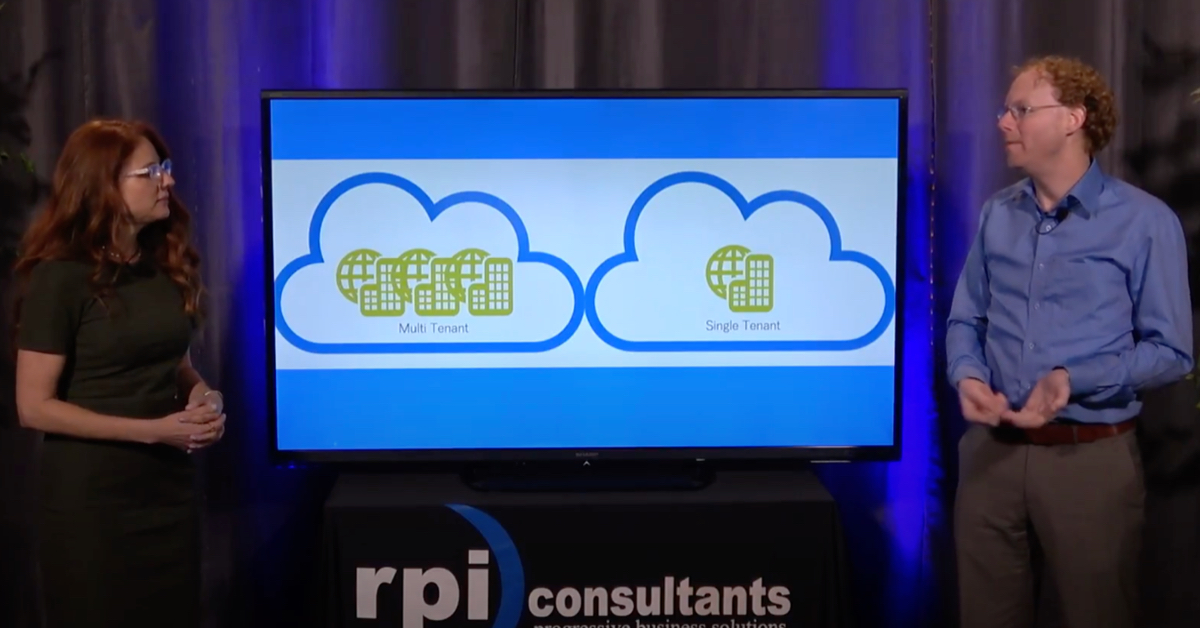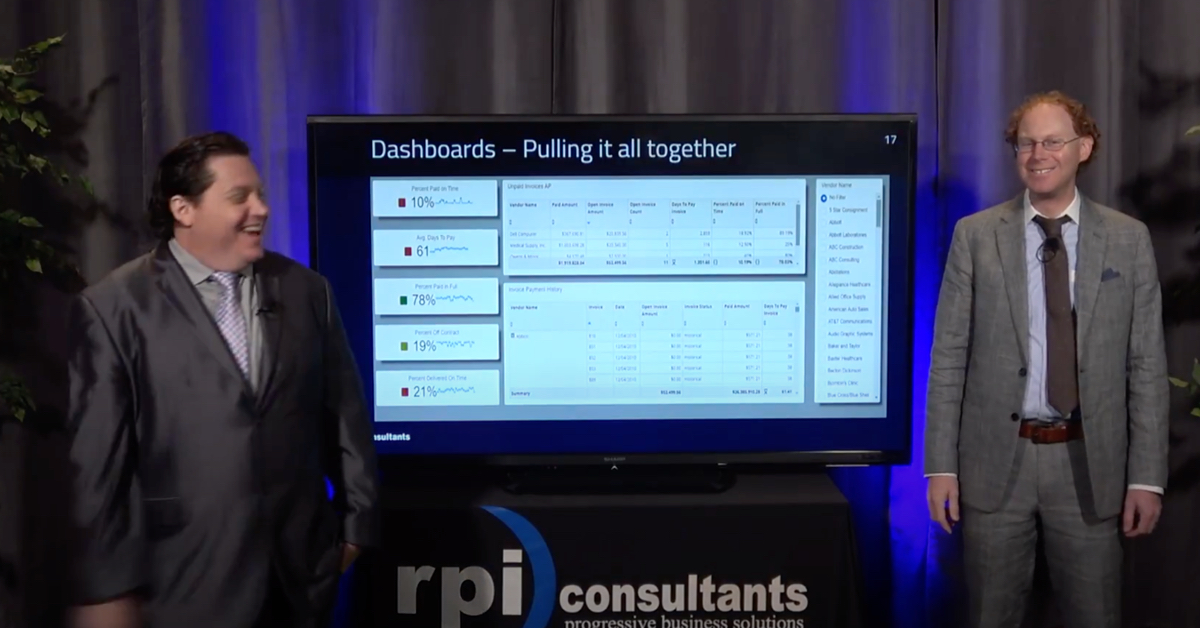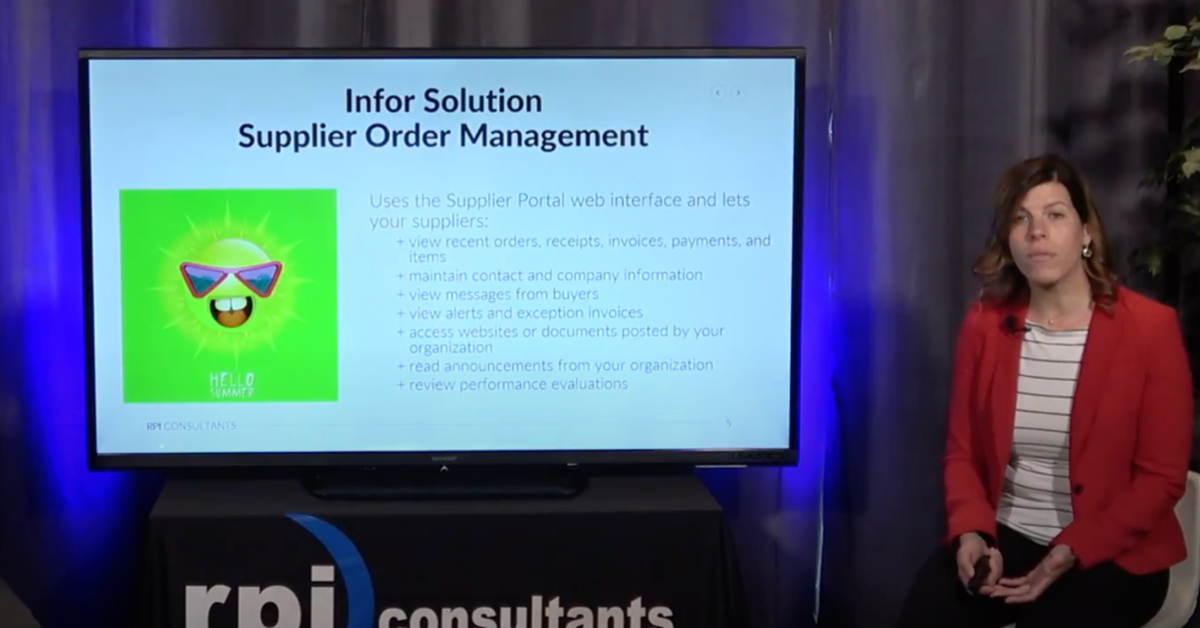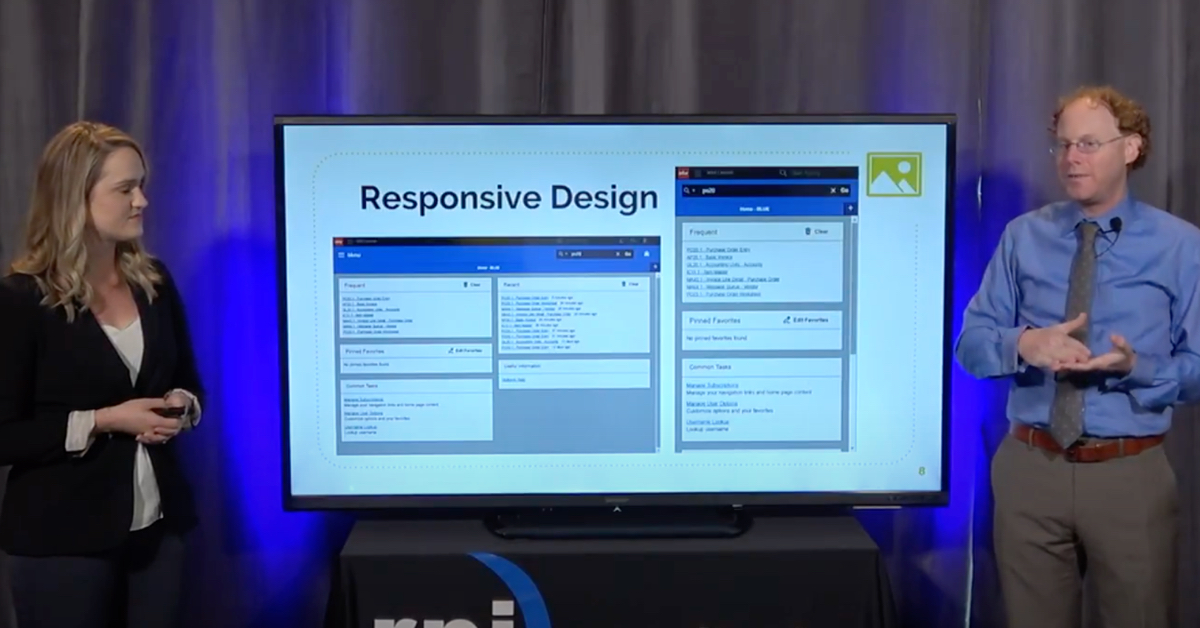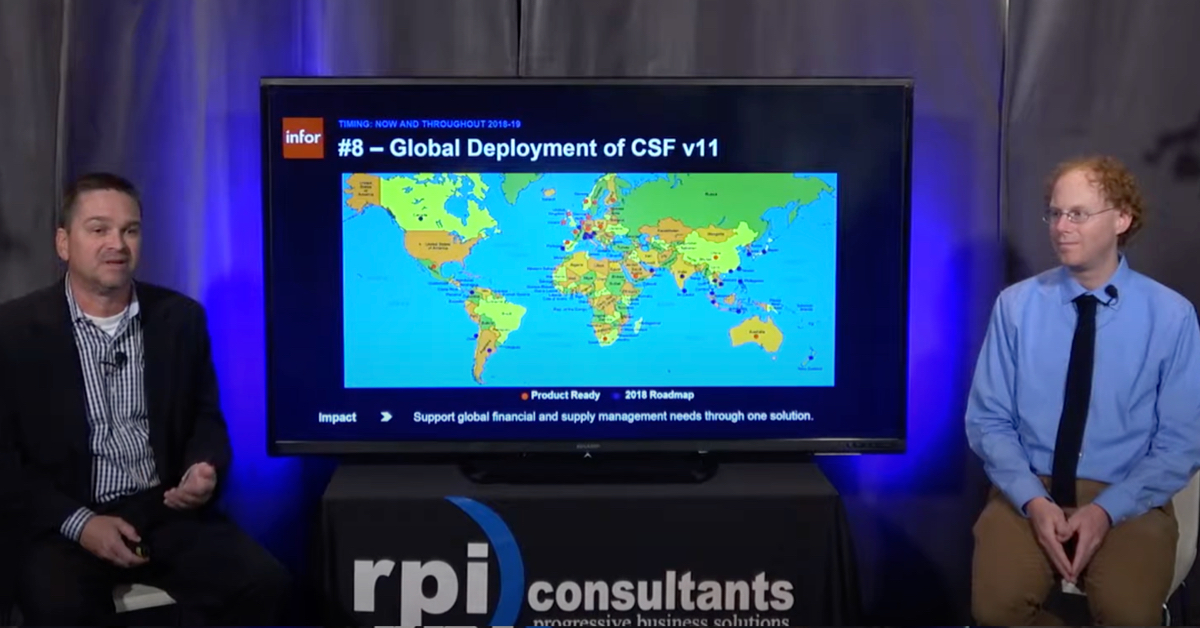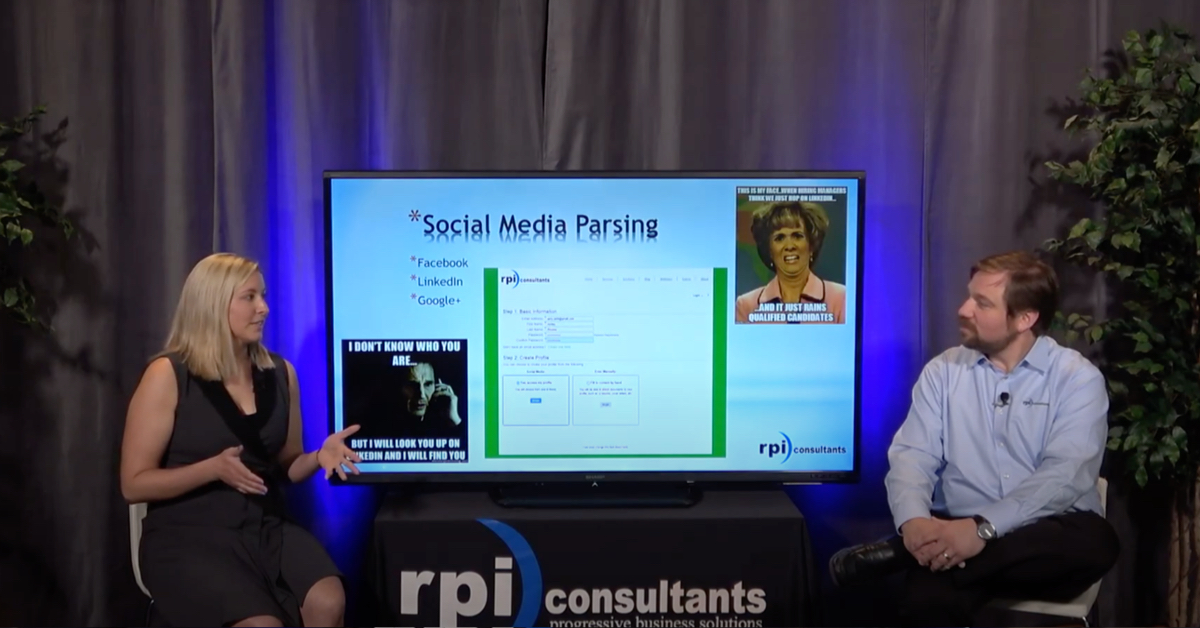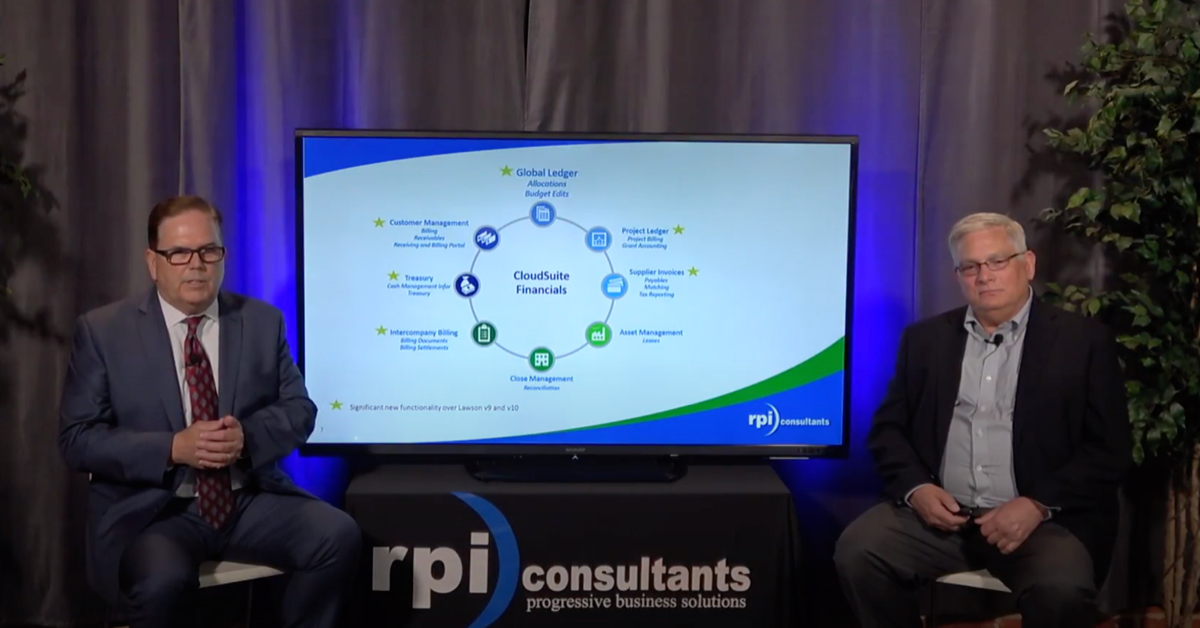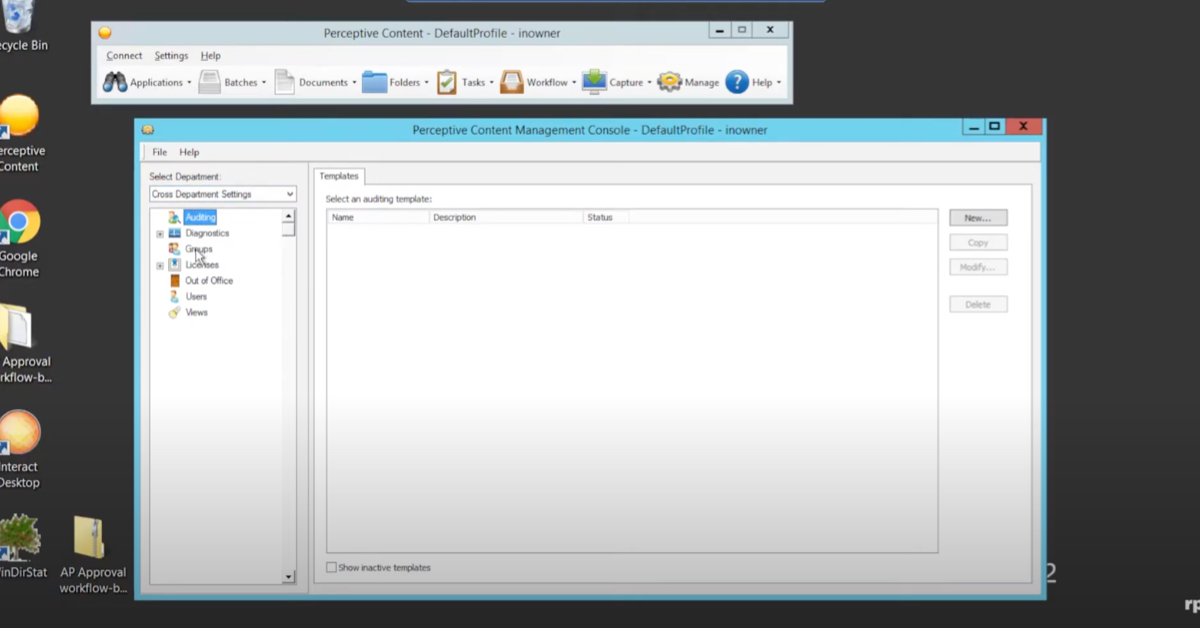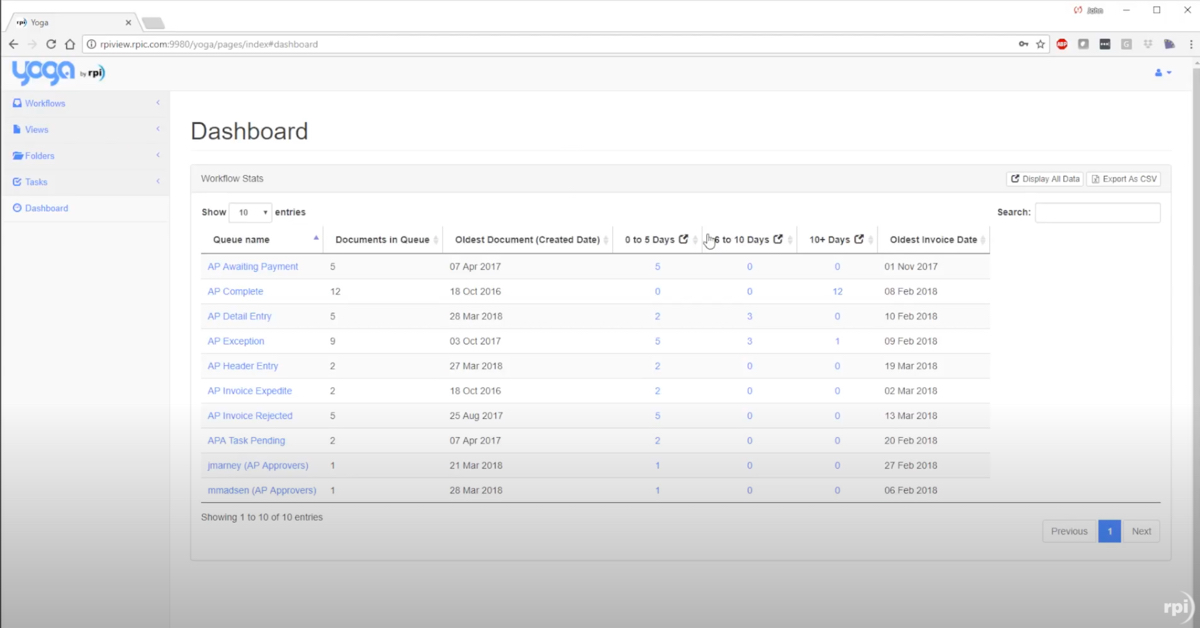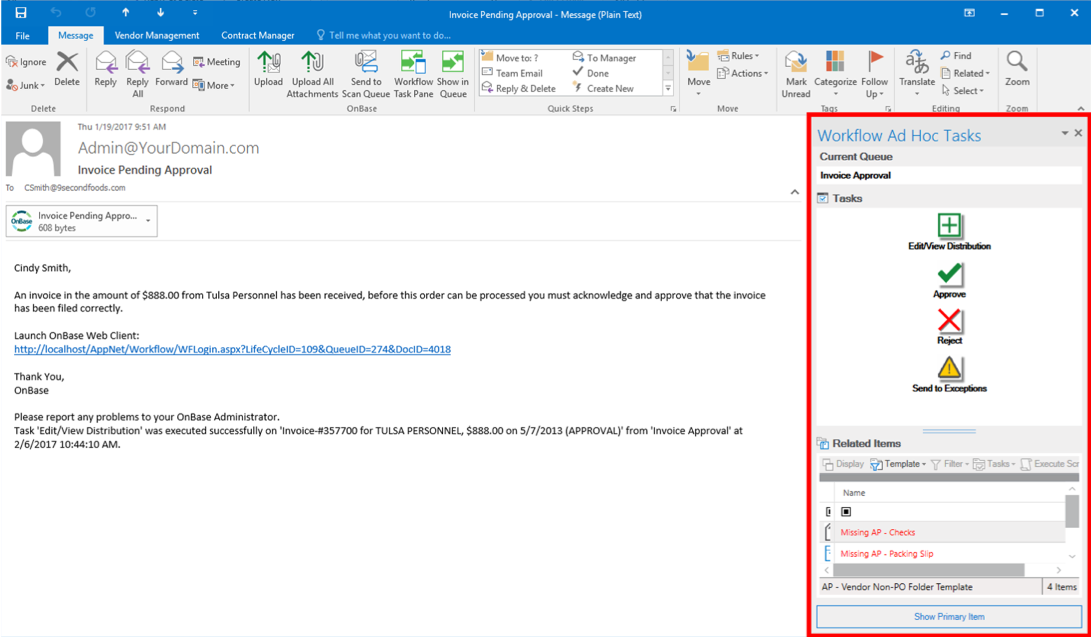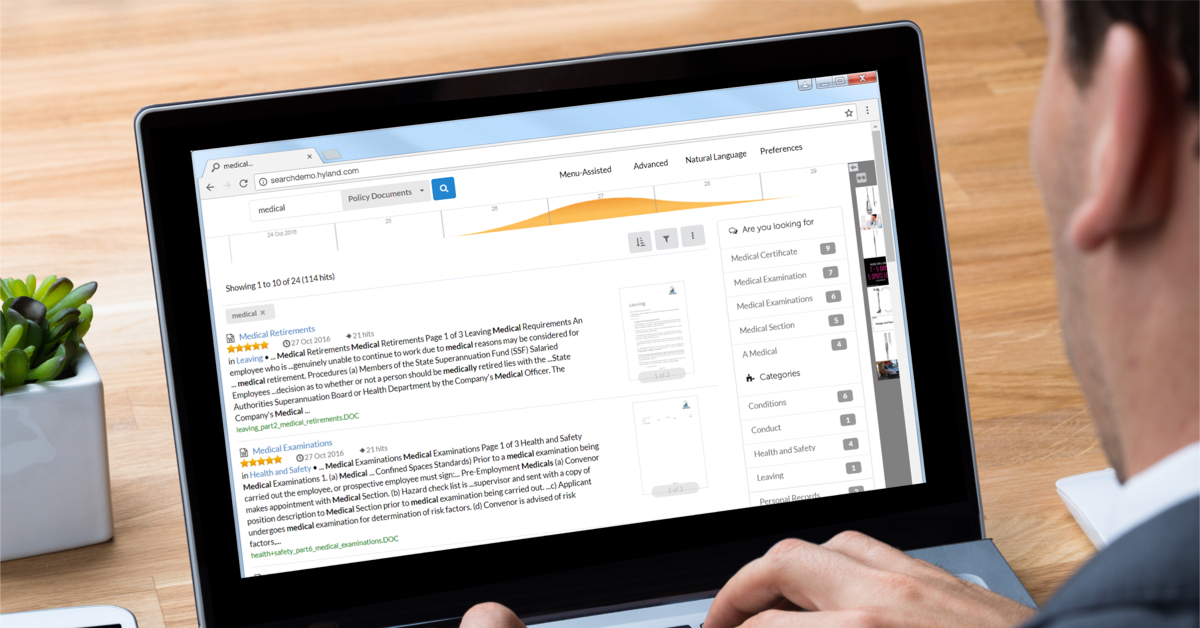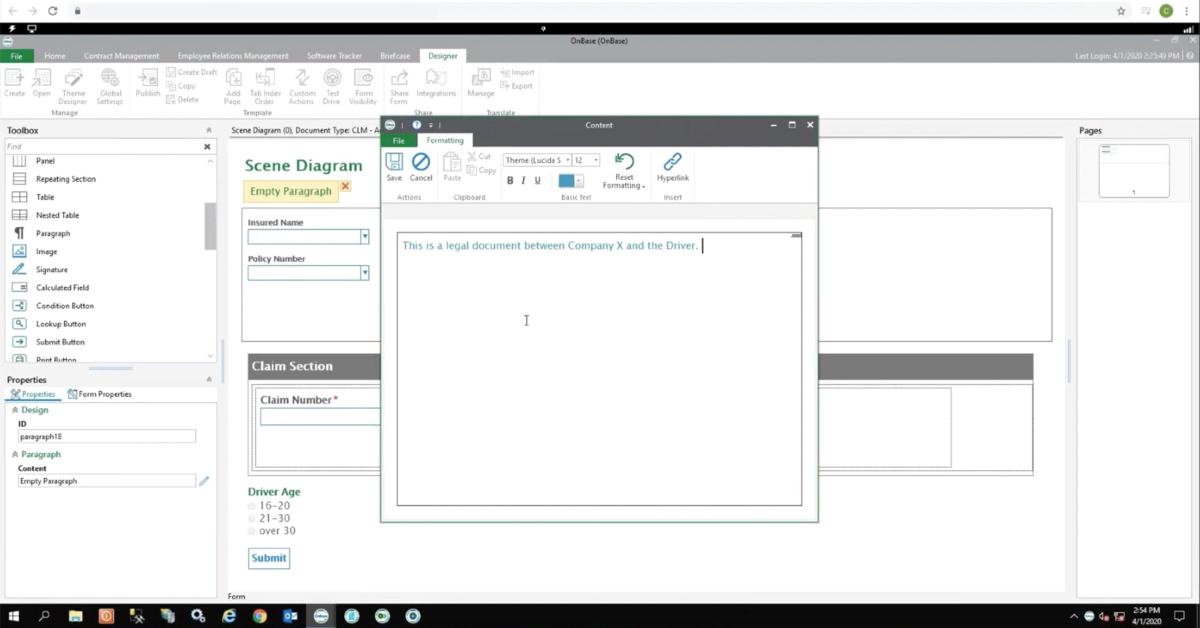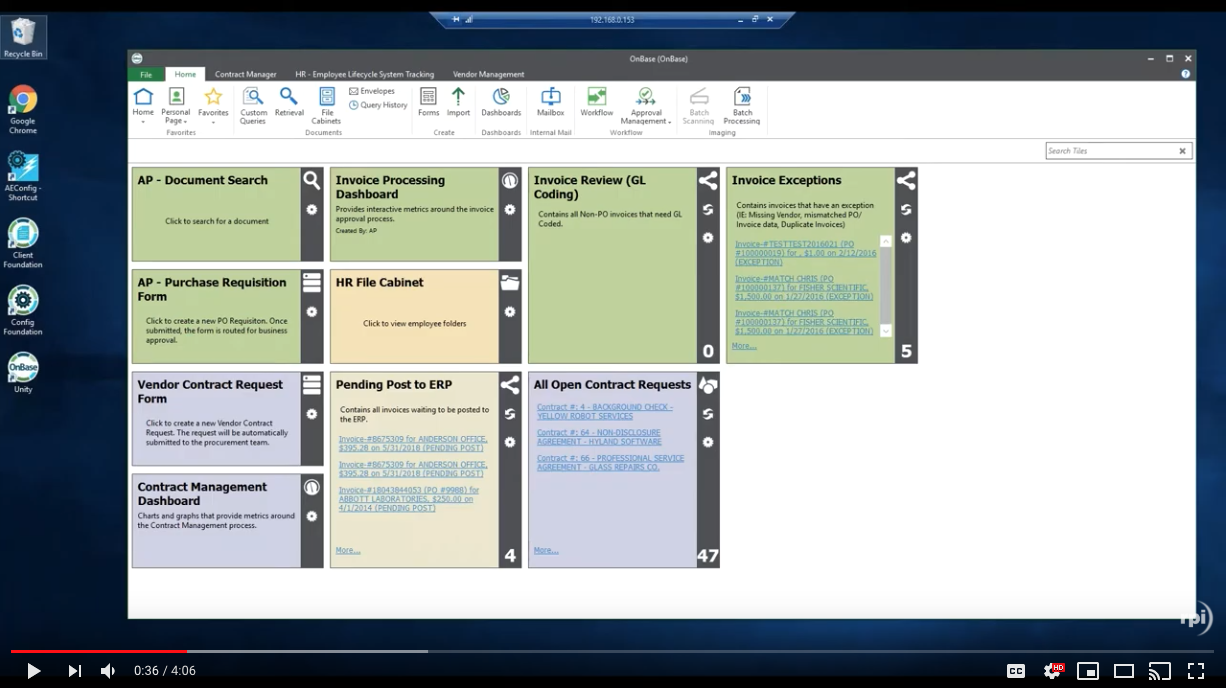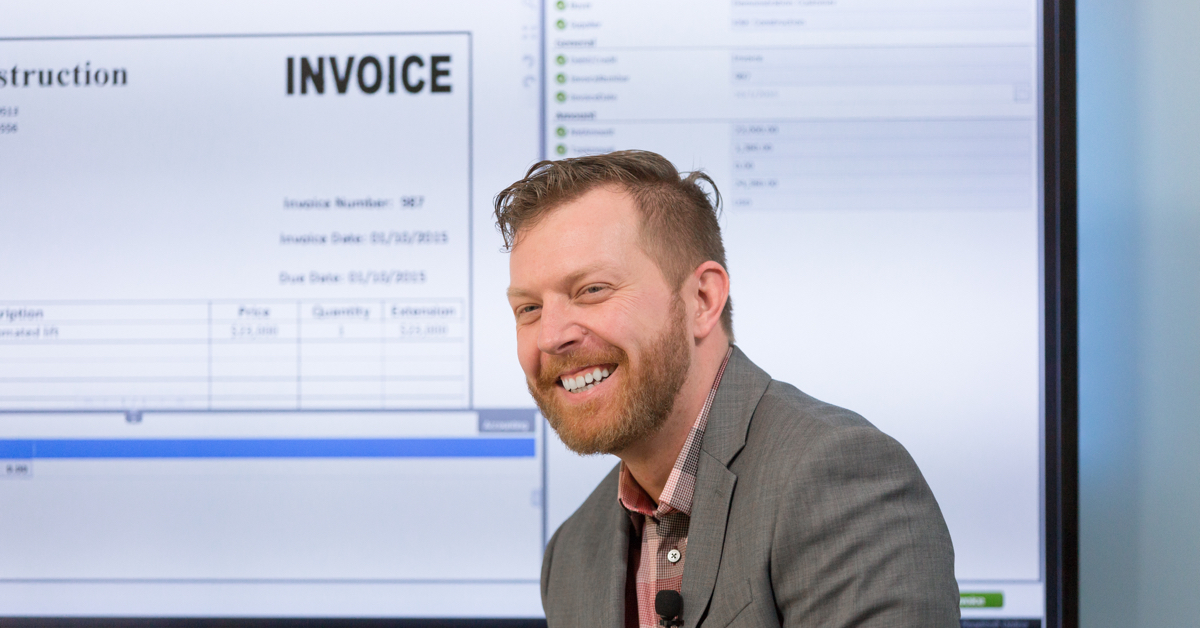Out-of-the-Box Invoice Processing with AP Agility for Kofax KTA
Kofax TotalAgility is a powerful workflow automation platform aimed at creating flexibility for complex business processes. AP Agility is a pre-packaged Accounts Payable and Invoice Processing solution automating OCR, extraction, verification, and invoice approvals within Kofax KTA. Combine this with deep, out-of-the-box ERP integration, and AP Agility is ready to take AP automation to the next level.
Transcript
John:
Hi everyone, thanks for joining us for another RPI Consultants Webinar Wednesdays. Today we’re going to be talking about automating your invoice processing with AP Agility inside a Kofax KTA.
Before we get started we have a few housekeeping items. First is, of course, this slide deck will be sent to all attendees, so don’t feel like you have to take any screenshots or anything like that.
A recording of this video, or a video recording of this webinar will be put on our YouTube channel shortly after we’re done. You’ll be able to reference this and share it internally.
Of course, we have someone standing by to take questions. Please feel free to use the questions pane inside of the go-to webinar panel to submit those questions and we’ll tackle those probably at the end.
Finally, we’re always looking for new content and new things present, so if you have new ideas for topics on additional webinars that you’d like to see us put something together for, please reach out and we’re happy to do so.
First, a look at our webinar schedule. This is the first of three webinars today. In the early afternoon we have a webinar on our email capture service, which is an RPI developed product, to facilitate the capture of emails and attachments, as well as allowing for greater flexibility in auditing and following those documents through your process.
Then later this afternoon, we have a webinar on Hyland’s OnBase, and specifically around the workflow. Showing what its capabilities are, how to create a simple workflow, that kind of thing.
Next month, August 1st, we have two webinars. In the morning, we have a testing best practices webinar, and that’s system agnostics. This is just general advice and best practices.
Then in the afternoon, we have a webinar on Brainware for transcripts. This is for automating the extraction off of high school and college transcripts for higher education institutions.
If you haven’t met me before, my name is John Marney, I’m the Manager of Solution Delivery here at RPI, on the imaging team. I have over eight years of experience implementing and designing and supporting OCR and Workflow Solutions. This is across many different platforms, ImageNow, Kofax, and OnBase.
I’ve specialized in accounts payable and financial process automation, specifically in health care industry and financial services.
Richard:
I’m Richard Creavalle, I also have about eight years of experience in designing, implementing, supporting primarily Kofax products. I do have experience in other products, but Kofax is my specialty.
I also specialize in accounts payable in financial processes for healthcare and commercial organizations. I’m a senior consultant here at RPI.
Just a quick agenda, and what we’ll be walking through today. First, we’ll just start a little bit, and talk about RPI consultants and who we are, what we do.
Then we’ll do an overview of Kofax KTA, of Kofax Total Agility. Then we’ll dive in a little bit deeper into the AP Agility for KTA. We’ll touch a little bit on IP Agility, as well.
And then we’ll do a product demonstration, and then at the end we’ll do summary and questions.
John:
It’s important to note that this all in the broader conversation of AP automation. Accounts payable automation is generally implementation of software and new processes in your department, to maximize your efficiency and the capture and processing of invoice and credit documents. All the way from when you receive the document, and how you receive the document, to the payment of said documents.
This generally includes OCR, so actually running the document through an OCR engine to extract information off of it. As well as a digital workflow and approvals.
However, the entire topic of AP automation is not really the focus of this particular webinar. We have many materials available and can definitely help that conversation. If you are interested in the benefits of AP automation, as well as interested in assistance in helping with the ORI of that type of implementation, please reach out.
Okay. First, just a quick bit about RPI consultants in general. We are eighty plus full-consultants, PM’s, developers, architects. We have our headquarters in Baltimore, we also have an office in Tampa, and your joining us here on a very hot day in Kansas City.
We focus primarily on Infor Lawson, we are partners with Infor Lawson Implementation and Services, as well as being partners with Hyland, which covers the OnBase products, the Perceptive products, and the Brainware product. As well as being partners with Kofax, which is primarily what we’re focusing on today.
Richard:
Just a quick overview on KTA and what it is. KTA, it’s a highly-flexible platform. It’s really become the evolution of what Kofax Capture and KTM, or Kofax Transformation Module’s been. It allows for a web-base, highly-scalable, highly-flexible platform.
It includes add-ons for analytics, AP Agility specifically does have the analytics included in the licensing of the package. Again, it combines the Capture, the intelligent OCR, the workflow, and content case management as well.
John:
That’s Kofax Total Agility, which is a product. What we’re gonna be primarily focusing on is AP Agility, which is a solution that can be deployed inside of KTA.
AP Agility is, at it’s core, meant to be an out-of-the-box invoice processing workflow. It is, of course, customizable to suit your business needs. But the core idea is that you can perform data entry and data validation, perform any exception handling, of course, your general ledger coding, and approval routing. All out-of-the-box with minimal configuration.
Of course, one of the biggest things that I think that the AP Agility brings to the table is a really thorough approval matrix administration. All done through a really awesome user interface. Many approval matrixes are managed in a spreadsheet or in a database table right now, and it’s very manual and cumbersome. In AP Agility, they provide an interface for doing that and allows for things like, approval templates, approval exceptions, one-off items, and things like that.
Of course, at its core, there is an accounts payable workflow that is involved to facilitate the exception handling and approvals, and you can take all kinds of actions inside that workflow. Approve, reject, but also reassigning, increasing the priority, and things like that.
AP Agility is ECM and an ERP agnostic. That meaning that we can integrate with Lawson, PeopleSoft, SAP, no problem. But also, for the ECM content repository, could be ImageNow, could be OnBase, could be Box. It doesn’t really matter.
Finally, as Richard had said, it does have some out-of-the-box analytics. This allows you to have some really excellent reporting to improve your business process.
Richard:
Just before we move on, I just wanted to give a difference between AP Agility and IP Agility. Also one more thing on AP Agility is that Kofax did release a product in AP Agility 1.0. This AP Agility 2.0 is a completely new product, it’s not something that you can upgrade 1.0 from. It’s a brand new product, and they just decided to keep the name and sunset the 1.0.
With AP Agility and IP Agility they’re two standalone products. I would say more so IP Agility is a standalone product, and then AP Agility and IP Agility work together. IP Agility or Invoice Processing Agility, what it does is that it takes that front end of the capture and getting all the extraction, the data, pulling your line items, your headers, your PO data, things like that, and doing your matches, things like that.
And that’s all it’s doing. It’s not worrying about the workflow, it’s not worrying about approvals, or anything like that. So if all you need is that upfront intelligence, then IP Agility is a great standalone product.
AP Agility now piggybacks on IP Agility’s data and then sends it along the way along your approval process for GL coding, any type of exceptions, approvals, reassignments, things like that. That’s the main difference between IP Agility and AP Agility, and we’ll touch on both momentarily.
John:
Right. Just to simplify it further, IP Agility is your OCR, AP Agility is IP Agility plus Workflow. Another component that is available, not necessarily included, it’s an add-on item, but is available with AP Agility that makes it kind of unique, is there are out-of-the-box ERP connectors available.
These will manage the import and export of the master vendor data, PO data, GL data, et cetera, from the ERP and the export of the invoice data back to the ERP, without flat file transfers, this is all done via web services and with minimal configuration.
We install the ERP connector and it has been built to already interface with the ERP in the way that it needs to to get that data. Connectors are available for Infor Lawson, Microsoft Dynamics AX, and also PeopleSoft and JD Edwards, with more on the horizon.
Richard:
Just a quick thing on the system requirements. You do, again, need KTA. You can not have IP or AP Agility without actually purchasing KTA or Kofax Total Agility, because again, Total Agility’s a platform, and AP/IP agility are add-on packages, or solutions to build out that platform.
It does need 7.4, twelve or higher. Right now it’s only supportive for the OnPrem Solution. Kofax, for those that don’t know, does offer Azure solution, a SAS-based solution for KTA, but right now it’s only supportive for OnPrem, but that SAS solution is coming soon.
You also need IP Agility, like we mentioned before ’til you have AP Agility, you need 1.0.0.2 with the fix pack of 8083, and then you also need the additional licensing for the clicks for IP Agility and AP Agility.
John:
We’re gonna take a quick look at a couple different architecture diagrams. They describe roughly the same thing, but in a couple different ways.
Richard:
As you see here, this is kind of a great overview of the system and what it’s doing. Over here, you’ll have your capture. That capture is gonna be from any place. KTA supports for multi-channel capture, so it could be from email, it could be fax, it could be a scanner, whatever it is.
It comes in through IP Agility and IP Agility is gonna take care of your OCR, all of your data extraction, validation, and your PO line-pairing, for all your PO invoices, and then writes everything to the database and exports it over to AP Agility.
Once it hits AP Agility then you’ll have your exception processing workflow, your PO workflow, your non-PO invoice GL coding, other approval and workflow in your export, and everything in this piece here is a hundred percent customizable.
You could add in additional fields, you could add different routes, you could have pretty much as much as what you need to add on to what’s out-of-the-box already. Again, everything is talking to the Total Agility database, back and forth, and then along the way everything is being captured for analytics later on in the process or at real-time as well.
John:
One thing to note on this diagram is down here at the bottom, you’ll see that you’ve got the ERP and you’ve got the data transferring through CSV, and then … I’m sorry, invoice metadata going back to the ERP via flat file, Excel file, or CSV.
This is where that out-of-the-box ERP connector would replace the flat file transfer and allow for web service calls instead of flat file transfers.
Here’s another diagram that’s very similar. Again, you’ve got the capture kicking off the process. This pink box here has IP Agility and AP Agility and then we’ve got our outside integrations. Integrating back through analytics for AP Agility, and then this web service that would then interact with your ERP, that’s your ERP connector.
I wanted to include this slide just to highlight that AP Agility really is a complete solution that other software currently have, or software solutions have gaps on.
We have experience with all of these platforms. From capture to intelligent OCR, coding and processing in your workflow, approvals in your workflow, and your ERP integration, AP Agility is able to cover the entire breadth of those. You’ll see that, for example, ImageNow can facilitate the capture of documents, but then we have to spit it out to Brainware for the OCR. It works but it’s not necessarily the most seamless process.
Then it comes back to ImageNow or OnBase for coding, processing, et cetera. AP Agility’s able to cover the entire solution.
We’re gonna do a AP Agility demonstration, it’s around 15 minutes and so Richard will be doing that in our video.
Richard:
What we’re gonna do here, is we’re gonna start going into the IP Agility platform. We’re gonna log in, and take a look at this process right now. We’re gonna go ahead and log in as administrator, I’m gonna put in the password and click on log in.
Upon logging in, you’re gonna be met with what we consider the workspace, and the workspace is where you have all your queues, the different activities that need to be processed to certain levels, things like that.
You’ll see here that I have my activity, which is a lot of validation and exception, invoice coding, things like that. We’re gonna go ahead, and I’m just gonna start the process and go into the scan module. Again, this is just for demonstration purposes. This is a multi-capture or omni-capture platform, so it doesn’t necessarily always have to come in through scan, it could come in through email, it could come in through a file drop, it could come in through fax, whatever it needs to be.
You see here that we’ll have the client, and you could choose either, in this case, US or Europe. There’s an invoice type, where it can auto-detect, but you could also specify whether it’s gonna be a non-PO, or a PO invoice. Then there’s a default language, but then you could choose whether it’s Chinese, Greek, Japanese, Korean, so on and so forth.
You have those options where it would auto-extract based upon the need. I’m gonna also show you quickly the profile settings for the scanner which would then have the option in this case, we’re gonna use file import, we’re just dropping files in. But you could choose, if you have a physical scanner attached, you could choose different profile settings, which could be set within the software as well, and get a little bit more specific.
We can go to document separation and in this case, we’re just not using any document separation, it’s automatically. Those are the couple options that are within there. We’re gonna go ahead and I’m gonna import these files, and as you see here, I have quite a number of files. We’re gonna take and we’re gonna ingest those all in.
You’ll automatically see that it’s gonna go, it’s gonna ingest those eight files and it will go, you could see the document on the right side, and I’m just gonna quickly tap through each of these, just to show you that it did capture all eight of these invoices with no problem.
Again, make sure your quality’s good, things like that, and we’re just gonna go and submit this job. We’re gonna submit this job and where this is gonna go, it’s gonna go through the OCR, it’s gonna get OCR’ed, it’s gonna through the extraction engines, all the transformation, things like that.
While we wait for that to process … it does quickly process, but just to show you a little bit of the background of what IP Agility and AP Agility are doing. We’re gonna go into the solution configuration manager, and again, the beauty of the system is that you don’t have to worry about as much custom coding because most of it is set for you just for very easy configuration.
We’re just gonna go into the profile settings, and we’re gonna set the profile, and you could have many profiles, whether it’s a vendor, or maybe a region. It’s a really good option so that you have various profiles for each option. As you see here, there’s many, many settings that you could go through. There’s from the amount settings, and you could select the type of amounts, what characters to ignore, different company codes, and the currency settings, the document field types, and then the field settings.
In the field settings is where the bulk of where your configuration might be because within that you’re able to add fields, what fields need to be active and not active, and that could also, again, be based upon the profile.
For instance, if you have Canadian, where you have additional taxes, or European where you have the VAT, there’s different things that you could show and not show, and it’ll be still one validation form, but it’ll only show per the region. Those are the type of things that makes it very easy, you don’t have to worry about as many validation form for configuration. You could select which ones needs to be active and not active.
For instance, if there’s certain taxes that don’t need to be shown, then you could make that active for one profile, and then for a different profile you’ll have the options. You also have field types where you could choose whether it’s an amount, a date, a text, a table, things like that. You could put default values, and again, as you see here everything is a very easy interface to work through.
Other options for removing spaces, remove all exceptional characters, keep certain characters. If you wanted to keep a dollar sign, or certain periods, decimals, things like that. Again, this is set to this specific extraction profile ID of zero, and then it would be whether it’s a zero, one, two, how many ever profiles that you choose to set up.
Just go down the rest of these options, you have invoice number settings, some line item tables, line pairing options, material options, things like that. That’s just a quick overview of each of the settings that could go through, and how easy it is to just go through and configure the system quite easily, no real technical knowledge necessary.
It’s a very, very easy interface to work through and work with as you need to configure the system once it’s installed. We’re gonna go ahead and go back to IP Agility and once we’re back in IP Agility, we can go to our work queue, and from our work queue, you’ll see that our invoice job has came in, and today’s the 11th, and you’ll see that the validation is ready to go.
We’re gonna go ahead, and what it does is that, we brought in eight invoices, but it wants to process one invoice at a time, and that’s more so for ease of use, you don’t have to get … it doesn’t hold up invoices to have to go at a whole batch level.
This is the validation screen, and this is totally customizable, not completely, but in terms of the view that you can customize it. We’re gonna just hide some of these windows, just for simplicity. I’m gonna close out the navigator, and then I’m gonna minimize the current error, and then minimize the thumbnail view, as well.
And let’s just give that a little bit of evenness as well, and you’ll see here that the document type was an invoice, it got classified as a non-PO because there’s no PO, or it didn’t find a PO. I could choose various invalid reasons. As I go down here, then you’ll see that the information was all captured well, the only thing that was able to do, you’ll see, is the invoice number.
Let’s just take a look at this document, and you’ll also notice that on the document, that I could hover over these things … each of the lettering, and the wording, and you’ll see that it automatically extracted because it’s OCR’ed. It makes it very easy to know that it’s right.
You’ll also see that a client configuration requires validation for all documents. In this case, it got everything right, but just based upon the rules that we want the invoice number, in this case, to be classified. You’ll see that the line items were extracted properly, it’s literally a one-touch process in this case, where I’m just making sure that the invoice number is good to go, and we’re just gonna complete that activity.
Once that one activity is done for that invoice, it’s gonna automatically take me to a second invoice throughout the system, and that’s really, really beneficial, you don’t have to keep going back to the queue. But again, that’s also configurable, that if you do want them to go back to the work queue, that you have that option to go back into the work queue.
In this case, you see that this was a PO invoice, because there was a PO number found. The PO number and the company code, you’ll see, that the one line item was extracted properly, and it makes life very, very easy. Again, easy, one-touch process, nothing overwhelming. The validator just has to verify that the invoice number was accurate. You’ll see that the invoice number was extracted and where it was extracted from.
We’re gonna go on to the next invoice. We’re just gonna go through, go to the third invoice, and again, as you see that each of these invoices … it automatically also took my settings, how it was displayed, so it doesn’t have to keep on being reset. You’ll see that the document ID, and job ID was down there, and then again, invoice number, that was all good. Easy, one-touch process, one click.
We’re gonna go to the next invoice, and from that next invoice then you’ll see that again, invoice number was extracted properly. We’re just gonna take a second, and I’m gonna show you some of these great features around the extraction.
You’ll see that, for instance, for the bill to name Kofax, it did extract it properly, but I can also do a type-ahead feature, where it would say just a ‘K’, and you’ll see that drop-down. I could also do a lasso, where I could just lasso that information and pull the Millicorp, or Millipore Corporation. Or I could just click it and then Kofax would come back in.
That was simple, again, simplicity, one-touch is what this system is all about. Speed of processing those invoices, getting them through validation, and leveraging the power of OCR, transformation modules, and all of the out-of-the-box features that IP Agility does come with, to then make AP Agility that much more effective in terms of time, cost, implementation, and all those great benefits of utilizing the system out of the box.
I’m just gonna, again, knock out the rest of these invoices, and then we’ll head over to AP Agility in a second.
Alright, we’re finishing up that and we’re gonna jump over to AP Agility, and AP Agility, I’m gonna log on and AP Agility and IP Agility, like we mentioned in the beginning, are two separate modules, or add-ons to Total Agility. But, you can either have it that it’s one screen, or you could have it as two separate logons for separation of duties.
You’ll see that we have the various tabs and you’ll … brought into the work queue, and all of the information that would be for each of the invoices. The date, invoice date, due date, things like that.
We’re gonna go ahead, I’m gonna take my first invoice coding activity. Also notice that only the non-PO invoices have to come through. As soon as you’re brought in, it’s met with the status that this invoice was required for GL coding, and to use the lines tab to add lines.
I’ll just quickly jump into the header, and you’ll see that the header information is all there, that was all extracted, it’s been validated. By the time it gets to those that … your GL coders, or your coders, then there’s very little information for it to worry about because that information should be accurate, and should’ve been handled during that time.
We’re gonna quickly take a look at the lines tab, and you’ll see that I have three lines here. I could either do them one by one, or if I say, “This is all going to the same, or receiving the same coding.” I’ll be met with the … choose the GL code. I’ll have recent codes that I could select, or I could manually do it.
I’m gonna select the USA. I’m gonna say that this is going for Orlando. I’m gonna choose an account, and then, in this case, I’m gonna choose 200. For the group, I’m gonna say that the IT is for the group. I’m gonna click okay. Once I click okay, I’m gonna scroll down to the bottom, and you’ll see that I need to update my lines.
I’m gonna update the line, and as I go, I could just click on the one line. You’ll see that my code information is there. I could do … again, either individually or as a mass, or a bulk GL coding, as well.
I’m gonna click on submit, to say that the coding is complete, and I could put a comment that everything is good to go, or if you just wanna leave the comment blank, then you can as well.
I’m gonna click on okay, and submit, and it’s gonna take me back to that queue, and you’ll see that I have one less activity there.
We’re gonna jump in quickly to the exception. In the exception, you’ll automatically be met with the reason for this exception. In this case, you’ll say that it needed to be added to analytics, that’s the reason why this was just an exception, again for demo purposes.
All the information is there, and I could either choose resolution complete, I could look at that header information as my manager, or whoever needs to be handling this exception, see my lines, in this case they probably didn’t … we didn’t add any GL codes because it was an exception.
I could either cancel the invoice, reassign, do any comment requests, hold that invoice for various reasons, and you’ll also see that this is not a duplicate. You’ll see that status of that invoice, that you know that this is not a duplicate, and that’s not a reason for this exception, as well.
I’m just gonna discard the changes for now and take you back into the queue. You’ll see that that one that I just coded now is in the approval queue, and I’m gonna go into the approval queue. You’ll see that the information is there, and it’ll tell me that the invoice does require approval … require approval from me, and I can look at the information.
It’s as clear as it needs to be for the end-users, so that there’s not a lot of room for interpretation in what to do for each aspect. You’ll see that the code that we put in earlier was brought across. I could see each of those codes, and I could also see the history that me, as the administrator in this case, went through invoice coding and my notes and comments that were added.
I could go ahead and see approve, I could reject, I could assign, comment, hold, and in this case I’m just gonna approve it, and I have no additional comments, I’m just gonna say okay and submit, and we are good to go.
That’s AP Agility at a high level, overview of the system from invoice coding to approvals to exceptions and how each would be handled.
John:
That was our demo video. Thank you, Richard. We’re gonna do a quick summary of what we’ve talked about before we take questions.
What you’ve seen is built on Kofax Total Agility or KTA, and includes IP Agility. It is an end-to-end AP automation solution within a single product in a single platform. It’s meant to be out-of-the-box workflow for your PO and non-PO invoices and credit documents, with the ability to customize it.
Richard:
Also, there’s out-of-the-box data integration with your ERP’s so it does become seamless. Again, you have the option of the web services that will have more of a dynamic data flow, and then you could use static CSV’s as well.
You also have content integration with your ECM and ECS platforms. Your OnBase, or Box, or whatever that you use for your content management system, and again it does include the AP Agility analytics, which at some point in the future we will do a specific webinar on the Kofax offerings for AP and their analytics platforms in general.
John:
Alright. That is the majority of our content for this webinar. We’ll now open up to any questions that there are.
Speaker 3:
Alright. We have a couple questions. First is the OCR template-based?
John:
I’ll let Richard talk a little bit about that, but in general, the answer is no. It is intelligent out-of-the-box, and it has a large variety of invoice templates, or not templates … invoice types that it can read right after being set up.
Richard:
Correct. It doesn’t use templates, but it uses what we call ‘extraction locators’. It’ll go, it’ll find based upon a line item, a table, there’s table locators, there’s invoice locators using a set of keywords that are generally found on invoices, amount locators, things like that. Then we can use evaluators to find exactly how that is and then we can also specialize it to specific vendors that need … if your vendor has a certain template or format that is specific to them, then we could include that as well in the training.
John:
Something to point out that we didn’t really touch on is a very powerful part of this solution is the Kofax Learning Server. Or do they call it active learning now?
Richard:
Yeah.
John:
Is that the term? Which allows, as users make corrections, maybe it missed an invoice date, or missed a piece of your PO line table, it will submit that to the learning server, and train the system on how to read those items correctly in the future. That is pretty unique to this product.
Speaker 3:
Alright, great. Another question. How long does AP Agility take to implement?
John:
Any AP automation implementation is generally not a super short project. That said, it’s gonna vary a lot based on the size of your department. How many users are we training? How many different integration points do we have?
Some organizations have multiple ERP’s, which means every integration you set up has to be done multiple times. That’s a complicated answer, but it’s something that we do over and over.
We’ve have AP automation implementations take four weeks, maybe at the minimum, probably more like six. All the way up to, the average is maybe something like twelve weeks up to six months, to a year. It really varies a lot.
Speaker 3:
Last question. Where are the invoices stored?
John:
The invoices, while the documents are inside KTA, inside of AP Agility, they’ll be stored within the product itself. It has a database for managing the images.
However, KTA is not meant to be your long-term content repository. We see that as a benefit because it keeps the size of the solution smaller, and allows you to output the document images to something better tailored for long-term storage and retention.
Richard:
Yup. Again, it’s agnostic of whatever platform you use, so even if you wanted to use something as simple as a folder structure, which we don’t normally recommend, but it can go as simple as that, as a content repository.
John:
Right. That was the last question?
Speaker 3:
That was it.
John:
If you have any further questions, of course, feel free to reach out. Just to wrap up, we do, of course, have a number of additional resources. You can hit up the RPI Knowledge Base on our website, and we do have a number of other … a number … we have a lot of other webinars available, but specifically, we do have some webinars available on these other Kofax products, if you’re interested.
Thank you for joining us today, and I hope that you’ve learned something about AP Agility.
Want More Content?
Sign up and get access to all our new Knowledge Base content, including new and upcoming Webinars, Virtual User Groups, Product Demos, White Papers, & Case Studies.
Entire Knowledge Base
All Products, Solutions, & Professional Services
Contact Us to Get Started
Don’t Just Take Our Word for it!
See What Our Clients Have to Say

Denver Health
“RPI brought in senior people that our folks related to and were able to work with easily. Their folks have been approachable, they listen to us, and they have been responsive to our questions – and when we see things we want to do a little differently, they have listened and figured out how to make it happen. “
Keith Thompson
Director of ERP Applications

Atlanta Public Schools
“Prior to RPI, we were really struggling with our HR technology. They brought in expertise to provide solutions to business problems, thought leadership for our long term strategic planning, and they help us make sure we are implementing new initiatives in an order that doesn’t create problems in the future. RPI has been a God-send. “
Skye Duckett
Chief Human Resources Officer

Nuvance Health
“We knew our Accounts Payable processes were unsustainable for our planned growth and RPI Consultants offered a blueprint for automating our most time-intensive workflow – invoice processing.”
Miles McIvor
Accounting Systems Manager

San Diego State University
“Our favorite outcome of the solution is the automation, which enables us to provide better service to our customers. Also, our consultant, Michael Madsen, was knowledgeable, easy to work with, patient, dependable and flexible with his schedule.”
Catherine Love
Associate Human Resources Director

Bon Secours Health System
“RPI has more than just knowledge, their consultants are personable leaders who will drive more efficient solutions. They challenged us to think outside the box and to believe that we could design a best-practice solution with minimal ongoing costs.”
Joel Stafford
Director of Accounts Payable

Lippert Components
“We understood we required a robust, customized solution. RPI not only had the product expertise, they listened to our needs to make sure the project was a success.”
Chris Tozier
Director of Information Technology

Bassett Medical Center
“Overall the project went really well, I’m very pleased with the outcome. I don’t think having any other consulting team on the project would have been able to provide us as much knowledge as RPI has been able to. “
Sue Pokorny
Manager of HRIS & Compensation
MD National Capital Park & Planning Commission
“Working with Anne Bwogi [RPI Project Manager] is fun. She keeps us grounded and makes sure we are thoroughly engaged. We have a name for her – the Annetrack. The Annetrack is on schedule so you better get on board.”
Derek Morgan
ERP Business Analyst

Aspirus
“Our relationship with RPI is great, they are like an extension of the Aspirus team. When we have a question, we reach out to them and get answers right away. If we have a big project, we bounce it off them immediately to get their ideas and ask for their expertise.”
Jen Underwood
Director of Supply Chain Informatics and Systems
Our People are the Difference
And Our Culture is Our Greatest Asset
A lot of people say it, we really mean it. We recruit good people. People who are great at what they do and fun to work with. We look for diverse strengths and abilities, a passion for excellent client service, and an entrepreneurial drive to get the job done.
We also practice what we preach and use the industry’s leading software to help manage our projects, engage with our client project teams, and enable our team to stay connected and collaborate. This open, team-based approach gives each customer and project the cumulative value of our entire team’s knowledge and experience.
The RPI Consultants Blog
News, Announcements, Celebrations, & Upcoming Events
News & Announcements
Selecting the Right RPA Automation Candidates
Michael Hopkins2024-02-28T08:48:00+00:00January 3rd, 2022|Blog, Professional Services|
10 Questions to Answer Before Implementing RPA
Michael Hopkins2024-02-26T13:58:28+00:00January 3rd, 2022|Blog, Professional Services|
Congratulations to our 2020 Scholarship Recipients!
Michael Hopkins2024-02-26T13:39:48+00:00January 20th, 2021|Blog, Our People are the Difference|
Sales Superhero Mike Gardner Retires from RPI Consultants
Michael Hopkins2024-02-26T06:07:47+00:00January 19th, 2021|Blog, Our People are the Difference|
RPI Donates over $10k in First Year of Charitable Giving Matching
Michael Hopkins2021-01-05T17:00:39+00:00January 4th, 2021|Blog, Our People are the Difference, Uncategorized|

